Sex and drugs and radiation: Dare-devil 'stalkers' illegally enter Chernobyl's Dead Zone
Twenty-eight years after the world's worst nuclear disaster, a small subculture of Ukrainians is now doing the unthinkable: defying government prohibitions and entering the highly radioactive Chernobyl Exclusion Zone
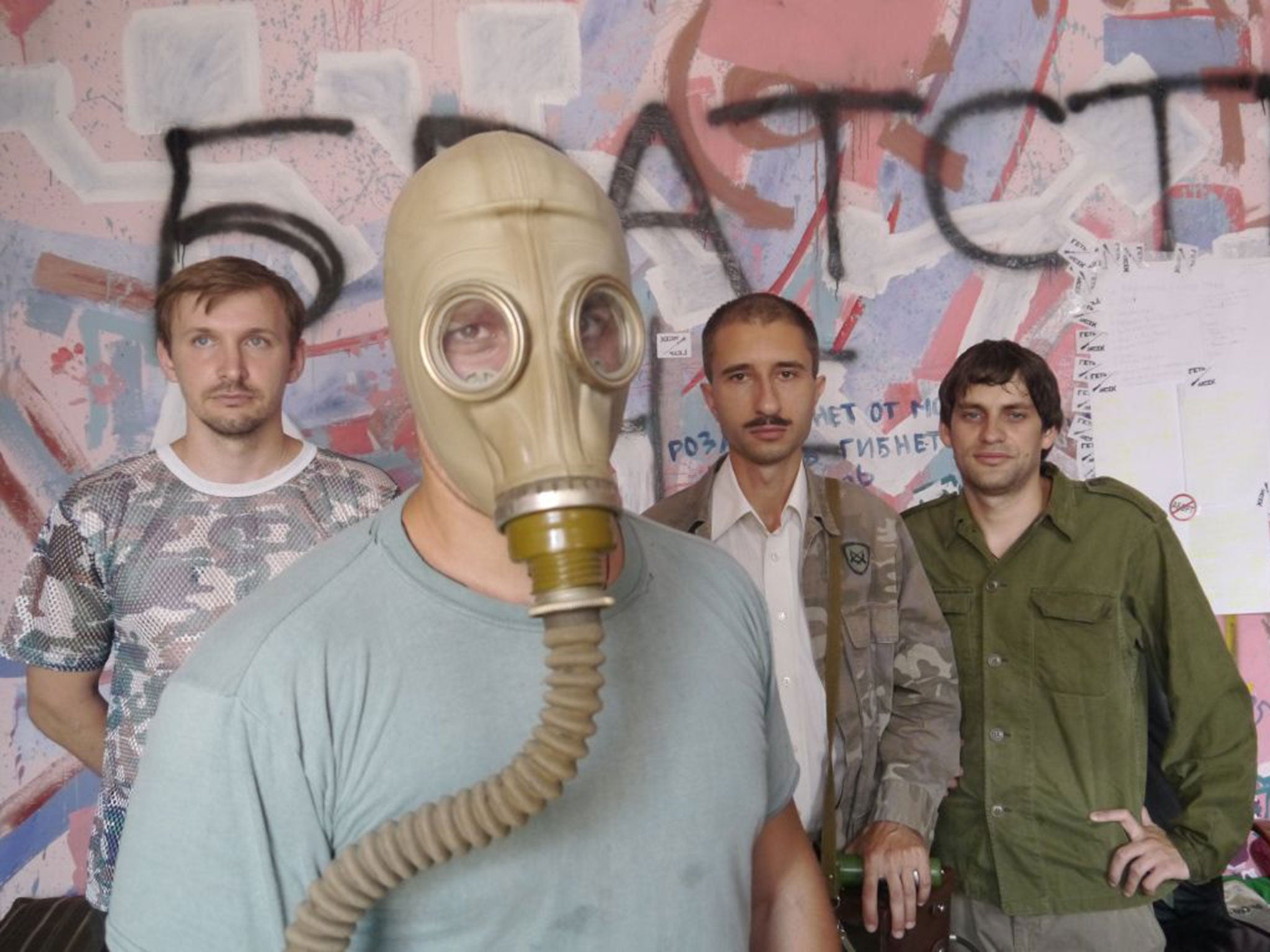
Your support helps us to tell the story
This election is still a dead heat, according to most polls. In a fight with such wafer-thin margins, we need reporters on the ground talking to the people Trump and Harris are courting. Your support allows us to keep sending journalists to the story.
The Independent is trusted by 27 million Americans from across the entire political spectrum every month. Unlike many other quality news outlets, we choose not to lock you out of our reporting and analysis with paywalls. But quality journalism must still be paid for.
Help us keep bring these critical stories to light. Your support makes all the difference.
A teenager in green and black paramilitary gear is speaking Russian in a hushed, low voice. An overgrown graveyard is barely visible off to the right of him. Traditional Ukrainian cloths hang on a few crosses. A white stork passes overhead. "This should be the cemetery," he says. He puts away his GPS. He holds his hand-held Geiger counter up over a mound of dirt that covers radioactive machinery; the beeping goes wild and the numbers shoot up. 1.1.7, 1.1.8, 1.1.9. "This is beyond the scale," he says, half-scared and half-thrilled. He moves away from the spot. The carcass of Chernobyl's Reactor No. 4 punctuates the distance.
On 26 April, 1986, the Chernobyl Nuclear Plant's Reactor No. 4 exploded, and the ensuing nuclear fire burned for 10 days, releasing 400 times as much radiation as the bomb dropped on Hiroshima. A radioactive rain blanketed parts of Ukraine, western Russia and Belarus. Twenty-eight years later, Chernobyl remains the world's worst nuclear accident.
The long-term effects and death toll of Chernobyl are controversial and hard to quantify. The World Health Organisation expects a total of 4,000 deaths linked to the event, including those who died in the initial disaster, and cancer cases that have developed and will develop afterwards. Other organisations, such as Greenpeace, contend that the health hazards have been wildly underestimated and that eventually, the death toll will hit nearly 100,000.
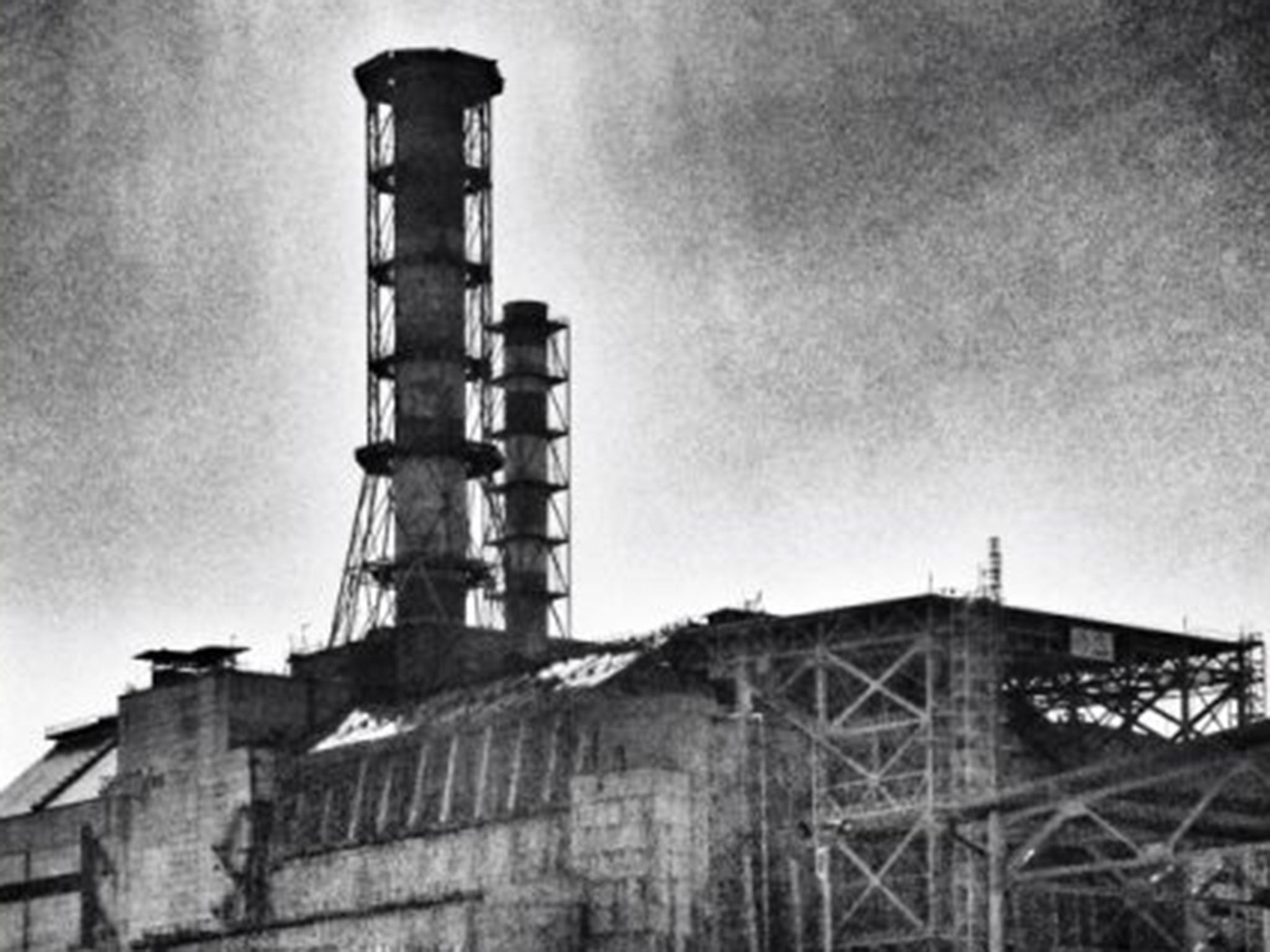
The fallout was political as well. The Soviet Union's inability to deny or control the story arguably represented the first cracks in the superpower's totalitarian myth – cracks that would widen into glasnost and within just a few years shatter the Soviet state.
As the first generation of Ukrainians born after the Chernobyl tragedy comes of age, a small subculture of them is now doing the unthinkable: defying government prohibitions and illegally entering the highly radioactive Chernobyl Exclusion Zone, or "Dead Zone"– for fun. This group is monitored and pursued by the police and is not fond of journalists. Members revel in the forbidden, recover meaning from Soviet detritus, and take digital appropriation to new extremes. "It's a post-apocalyptic romance," as one young man put it.
Shortly after the accident, the Soviets declared a 1,000-square-mile zone uninhabitable, and mass evacuations began to take place. Nearly three decades later, the zone remains among the most contaminated places on Earth, and at its centre is the ongoing hazard of the concrete entombed Reactor No. 4, with 200 tons of lava-like nuclear material underneath.
Just three kilometres from the reactor is the plant's company town, Pripyat. Today, the radioactive ghost town's abandoned apartment buildings slowly fall apart and pay quiet homage to the nearly 50,000 people who fled. Pripyat is full of still-lifes; a table set for dinner, a big wheel squeaking in an elegiac, fruitless wait for children. Wild boar snuffle through rusted playgrounds, and kindergarten napping areas are scattered with wide-eyed, broken dolls, thick with radioactive dust. From the top of a high-rise, one can see "the sarcophagus", three kilometres in the distance, covering Reactor No. 4, which sits cracked and rusted and wafting radioactive dust. Twelve-foot-long catfish swim in its long-defunct cooling pond.
For the "post-apocalyptic romantics" who have taken to sneaking into the zone, a visit to Pripyat has become the Holy Grail. They come here for reasons they can't fully explain.
V surreptitiously makes his way past rusted, still bumper cars, it is dangerous to move through Pripyat at dusk. Usually he goes only at night. He keeps his dosimeter [a device for measuring radiation] off so as not to make noise and alert police who might be on patrol. V walks into a nine-storey building, up the rickety stairs and into an apartment with peeling wallpaper and many shades of grey. "Dobryj den." Good afternoon, he says to three young men who are already there. They had agreed in an online forum that this is where they'd meet. This is their hideout.
The term that has come to be used for those who sneak into the zone is "stalkers." It's a word with deep resonance in this part of the world, first appearing in a 1971 science-fiction novel called Roadside Picnic, by the Russian brothers Arkady and Boris Strugatsky. In the novel, there are "post-Visitation" (presumably by aliens) worlds in which "zones" harbour inexplicable, deadly phenomena. The government tries to tightly regulate the area to keep a group of thieves called stalkers from sneaking in and taking out artefacts. Stalkers must evade both the police and a strange array of invisible, deadly booby traps.
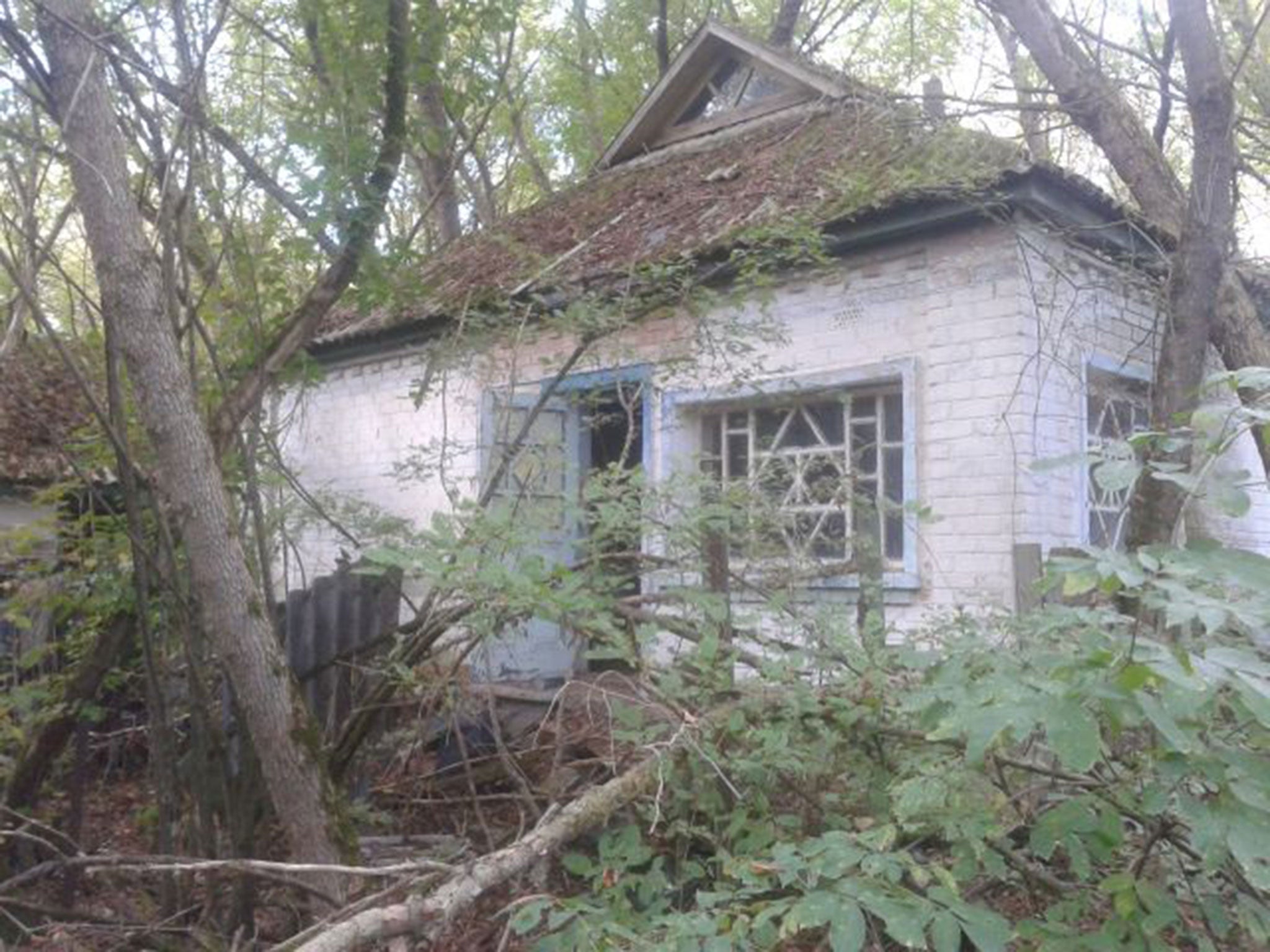
Eight years after the release of the book, Russian filmmaker Andrei Tarkovsky adapted it into the film Stalker. Both book and film became cult classics in the waning years of the Soviet empire. Roadside Picnic and Stalker, created 15 and seven years, respectively, before the Chernobyl accident spread radiation throughout the region, proved prescient: an apocalyptic event leaves behind an invisible force with the power to create mutants. It's not entirely fiction now, unfortunately.
They arrive at Rudnya-Veresnya after walking for several kilometres in the woods. It is a village inside the zone that was evacuated, but not buried, as many others were. A cottage is overgrown with rambling, bare vines and a shed next to it has totally collapsed. They enter, measure the levels at the fireplace, and shuffle through decades of old debris; memories of a life – postcards from a beach holiday, a notebook with a list on it – left in the wake of a hasty departure. They flip through old newspapers and find Communist Party ID cards. "It's a time capsule," says one visitor. "If you want to see how it was in the USSR 30 years ago, you can go to the Chernobyl Zone."
In 2007, the stalker legend was updated when a team of young Ukrainian designers released a video game that they called S.T.A.L.K.E.R. (Scavengers, Trespassers, Adventurers, Loners, Killers, Explorers, Robbers), set in the Exclusion Zone around Chernobyl. It has sold more than five million copies. It also spawned a subset of fans who were not content to confine their gameplay to the screen. Loosely organised squads of gamers began to experiment with breaking into the zone.
Since the zone was created in 1986, there have been isolated looters. But, today, breaking in has become a geek subculture, and for some, an obsession.

The nuclear accident, referred to in the region simply as "The Tragedy", may be hazy history for today's twenty- and thirtysomethings, but it remains an open wound for their parents and grandparents. The scores of first responders to the accident were exposed to fatal doses of radiation and were Chernobyl's initial victims. After them, robots tried to put out the fire, but the extreme radiation levels made the machines malfunction. Next, the Soviets brought in soldiers, who became known as "liquidators". Thousands of these young men were presented with a grim choice: two years serving in the bloody Afghan war, or two minutes shovelling radioactive debris off the top of Chernobyl's reactor. Most of them took a shot of vodka and opted for the latter. (Vodka was, and still is, widely believed by Ukrainians to combat radiation.) Most of the liquidators are now sick or dead.
One 14-year-old stalker told me, in hushed tones, how his grandfather was one of the Chernobyl plant's control-room engineers. The Soviets put his grandfather and his colleagues in prison after the accident (Soviet officials blamed plant workers for the disaster). "He got out a few years later and died of cancer. I never knew him," he says.
Most stalkers hide their activities from their families; others do it in defiance of them. One casually explained his status as a card-carrying "Child of Chernobyl" due to his exposure at a young age. "It allowed some privileges. We were sent to retreats and summer camps to rest and improve our health. My grandfather fought the fire in the zone for a month," he continued. "He would not be happy if he knew I was going. He was there against his will. I go because I want to. It would be unimaginable to him."
The stalker generation has grown up with a distrust of government and authority, first forged under Soviet rule and furthered in a post-Soviet era beset by corruption and economic turmoil. Another oft-cited piece of cultural fallout from Chernobyl is a pervasive fatalism; a widespread victim mindset, which creates a feeling of "lacking control over their future," as Fred Mettler wrote in the report Chernobyl's Legacy. "A number of adolescents and young adults who have been exposed to modest or small amounts of radiation feel that they are somehow fatally flawed and there is no downside to using illicit drugs or having unprotected sex," he adds.
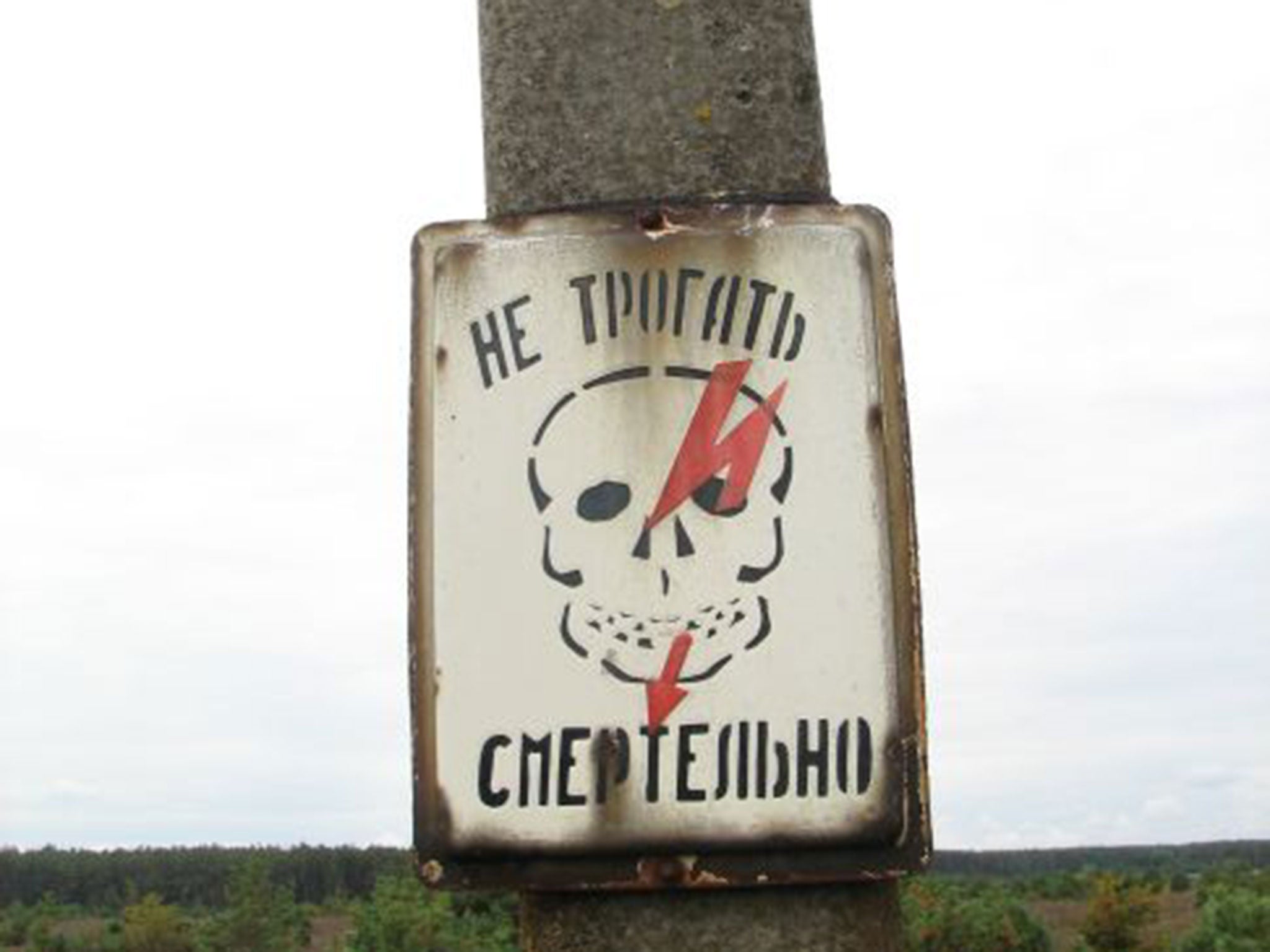
Sex, drugs, and radiation: stalking might be seen as the adolescent acting-out of a generation that feels it's got nothing to lose. But for many stalkers, it's clearly something more.Online communities have emerged to trade information, tips and advice on what routes are safe from the police, which entrances have become too dangerous, or where supplies are hidden. Experienced stalkers sometimes mentor younger wannabes. Pseudonyms are always used. In-person meetings are only cautiously pursued, as stalkers worry about police sting operations.
Some forums are open only to those who've achieved a certain level of success. Stalkers pursue a set of thresholds – or "acceptances" – by reaching an increasingly challenging (and dangerous) set of destinations. "Dogs and security are the biggest problem in the Chernobyl zone, not radiation, not zombies," says one veteran who almost lost an eye while fleeing police.
Of course, radiation seems like the most obvious danger, though the health risks aren't as clear as you might think. Nearly 30 years after an accident, nuclear contaminants with short half-lives are no longer a threat, and acute radiation poisoning would only take place if you "went into the sarcophagus and sat on the fuel containing rods", says former Chernobyl official Vita Polyakova. But there are still elevated background radiation levels in places such as Pripyat as well as super "hot spots" of severe contamination, many of them undocumented. The risk of ingesting radionuclides – the radioactive strontium and cesium present in dust, water and food grown in the area – is the most acute threat.
"Maybe on the outside we got more radiation than usual," a stalker concedes, "but once we leave, radionuclides are washed off our skin and that's it. The greatest risk is when it gets inside your body. That's why we try to bring everything with us – water, food."
"But D ate apples in the zone," I remind him.
"I did, twice. They were so big!" D chimes in. "I drink water in the zone, eat apples, and everything is good for me. No second head," he adds with a small smile.
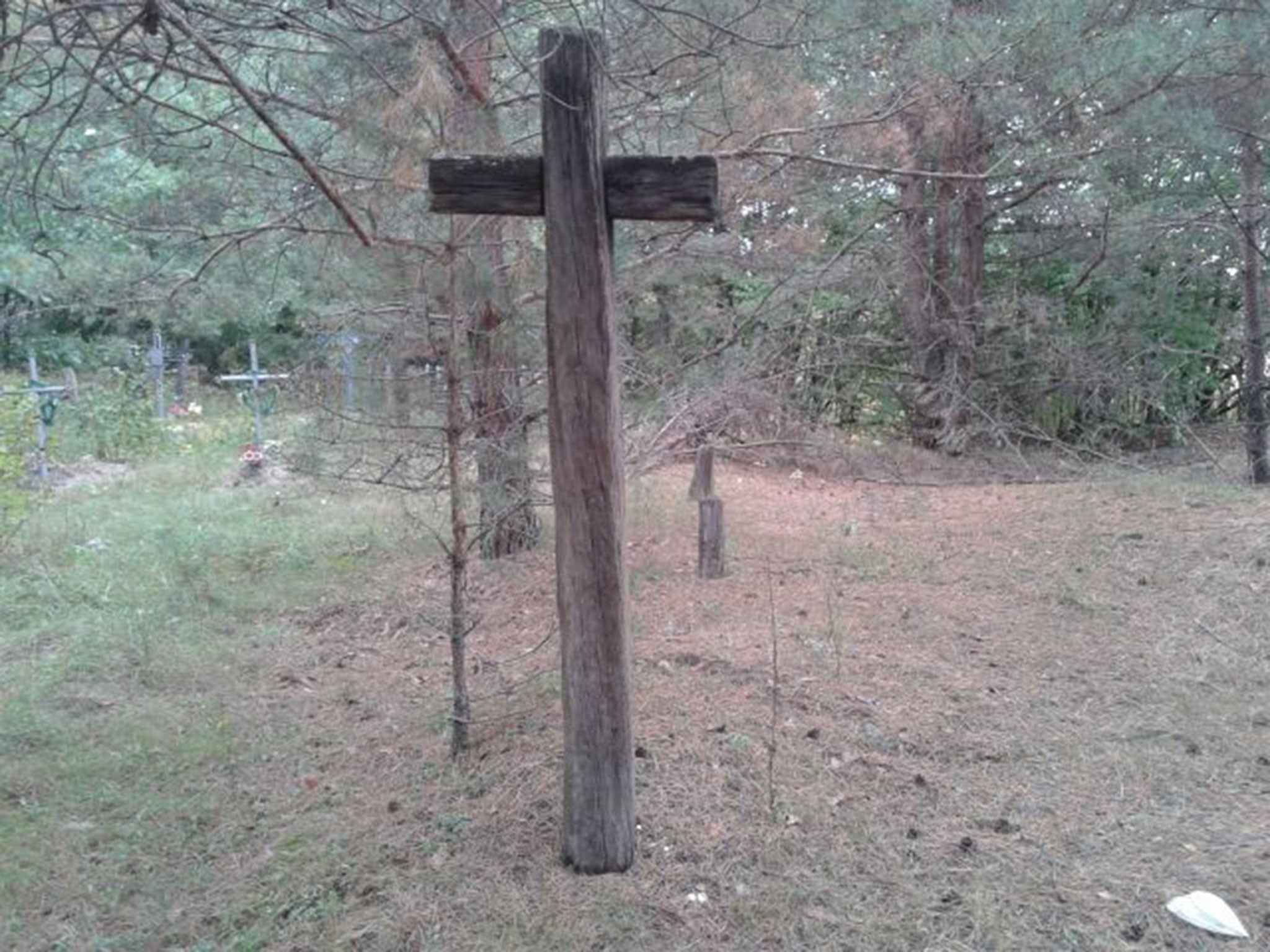
Among the stalkers I meet, their concerns for the risks – and attentiveness to radiation protocol – vary. Some use dosimeters, others don't or don't trust them "There's no guarantee the dosimeter will show a hot spot," says one stalker, correctly. Some reference radiation maps. Some take care to bring their own water supply; others drink from the highly contaminated ponds or rivers inside the zone, sometimes out of necessity: "We got lost and ran out of water. We had to collect morning dew from the greenery until we could find water."
Others drink water in a misguided show of videotaped heroics. One infamous stalker, seemingly maligned by other stalkers and officials alike, is a Russian named Sergey Papov. Alexander Naumov, a retired military police officer who now monitors the zone, showed me a video of Papov drinking from the Pripyat River near the plant's cooling pond, which is surely the most contaminated water in the zone. "By doing this, he is sending a message that there is nothing dangerous about the zone," says Naumov with disgust.
It is V's fifth night in the zone, the second in a Pripyat apartment strewn with cheap high heels from the Seventies and decaying ceiling tiles. He has explored the kindergarten, tinkled piano keys in a music shop, and picked his way through a destroyed gym, read dusty handwritten love letters from another era, crossed rivers, and pilfered condensed milk. He has found the peace that the zone delivers him.
"In S.T.A.L.K.E.R.," Alexey Sytianov, one of the game's creators, says, "the most important thing is the mystical atmosphere. Being around abandoned, destroyed places while heading towards one big goal and true wish, the player starts to be in contact with something – something that is even hard to describe with words. It comes from the destroyed surroundings, and from what he is believing in."
What do the stalkers believe in? An invisible enemy that might kill them at 50 years old rather than 70? No. Walking through their past on their own terms? Maybe. Responding to the energy and potential of their youth, despite the risk? It seems so. Clearly, stalking delivers them the present moment – the lawless wild greenery and pathless reality of the zone – that makes them, if only for a short while, masters of their destinies.
This is an edited version of an article that first appeared in 'Roads & Kingdoms' and on Slate.com. Holly Morris' documentary, 'The Babushkas of Chernobyl', will be released early next year
Subscribe to Independent Premium to bookmark this article
Want to bookmark your favourite articles and stories to read or reference later? Start your Independent Premium subscription today.
Join our commenting forum
Join thought-provoking conversations, follow other Independent readers and see their replies
Comments